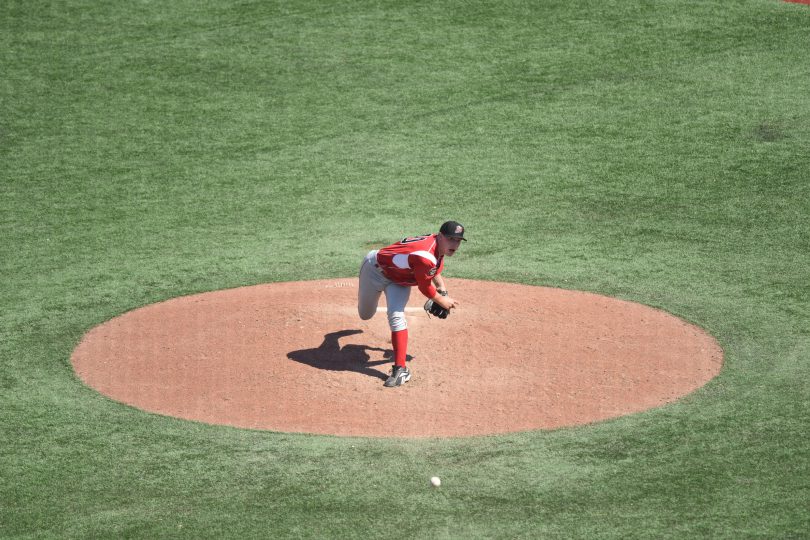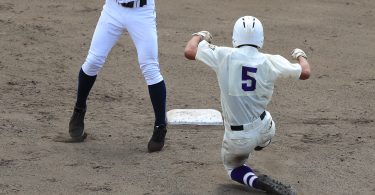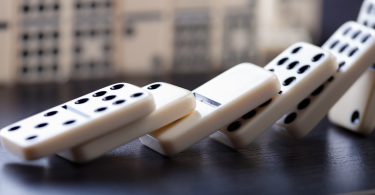The Situation:
There’s a runner on 1st base with one out in the bottom of the first. The batter has a 1-1 count as the pitcher toes the rubber.
The Play:
The pitcher comes set, holds for a two count, and delivers. The pitch comes in towards the middle third of the plate and the batter starts his swing. Before he knows it, the 2-seamer has exploded towards his hands. He tries to hold up his swing, but the ball hits his bat at the label and squibs towards the mound. The pitcher bounces of the mound and fields the ball with the intent of going to second. As he gathers the ball and peeks at second, he realizes he won’t have a play. Meanwhile, the batter is no more than half way to first with his thumbs still lying in the batter’s box. The pitcher directs his attention to first. Knowing he has time, he floats a soft throw over to first. As soon as it leaves his hand, he knows it’s in trouble.
The Outcome:
The ball sails over the jumping first baseman’s head and up the line. By the time the astute second baseman recovers it, there are runners at 2nd and 3rd with 1 out and the pitcher is in big trouble. Both runners come around to score before the inning finally ends.
What Went Wrong?
With so much time, the pitcher gets lazy and tries to flip the ball over to first with his stride leg pointed like he is making a throw to the second base position. An incredibly common mistake, the pitcher fails to re-set his feet and establish quality direction and momentum to his target. Despite having all the time in the world, the game speeds up on the pitcher. As soon as the ball leaves his finger tips, the pitcher and everyone in the stadium recognize his mistake.
This is all about building good habits in practice so that your auto-pilot is programmed with the appropriate response. There’s a reason why during PFP drills where pitchers are turning 1-6-3 double plays, coaches will occasionally have the middle guys intentionally “forget” to cover the bag. They want to see the pitchers react to the surprise calmly and take the time to re-set their feet (take a shuffle towards first if they have time) and make the routine throw to first. This will haunt the pitcher for some time, but it doesn’t have to haunt you. Learn from his mistake and make it a habit to establish direction and momentum on your throws whenever possible. Throwing flat footed and without momentum should be a last resort. Control your mind, control your body, and think the game.







